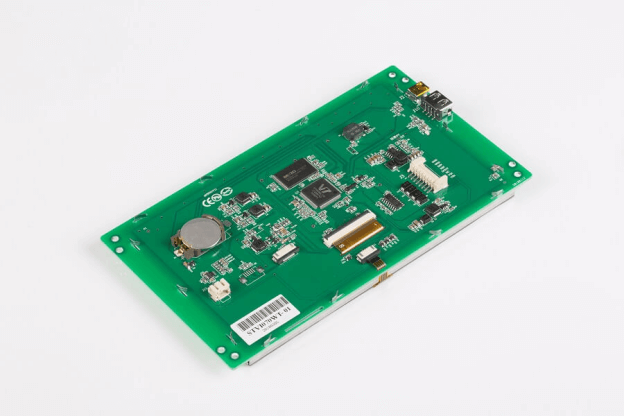The full meaning of TFT is a thin-film transistor display, and it is a type of liquid crystal display (LCD) that utilizes a thin-film crystal display to enhance image quality. These types of display models are common in many household appliances, including television, video games, computer monitors, mobile phones, and many other electronics.
For the power consumption to be outstanding, and the thin-film display has to be made from glass. The low power consumption of TFT modules is due to the tiny transistors installed in them. Although they have very sharp images, the viewing angles are not all that impressive. And as a result, it is best to view them in the frontal view instead of at an angle.
How it Works
The pixels on a TFT screen adopts a configuration that places them in a row and column pattern. Each pixel is then joined to a shapeless silicon transistor, which attaches itself directly to the glass panel. And by so doing, each of the pixels can receive a charge, which is kept for when it is needed. This type of pattern makes it easy for a particular pixel to be managed while the rest are in effect.
Difference Between TFT and LCD

While LCD is the parent name, TFT is a version of LCD. That’s not all; the display of the thin-film models makes use of large transistor sheets which are controlled individually. TFT also has a brighter and sharper screen compared to LCD. It showcases a moving image more smoothly and also refreshes faster. But the downside is a device with a TFT display will use up more electricity compared to liquid crystal display. You should even know that to enjoy the high display quality of the thin-film models, you will need to spend more to purchase it.
The TFT uses an active matrix technology, which is of a higher variation than the passive matrix displays. As with many screens, it is possible to get a custom TFT LCD display module to meet a specific need. And this is usually done when there is a need for a variation in size, as thin-films can be adjusted to fit a small and large screen.
How to Maintain TFT Screen
Most of the TFT or LCD screens are made from a glass material that can break when subjected to impact. Even with a crack on the screen, it can be challenging to get the best out of the picture quality. That is assuming it can still produce images at the backend of the screen.
When cleaning your screens for fingerprints and stains, you want to avoid pressing down on the screen. While they may be durable, there is an extent of pressure they can withstand before cracking. You also want to be careful not to use hard cloth on your screen. It can lead to scratches that can affect the picture quality and user experience of your devices. It is best to make use of a microfiber cloth to gently wipe specks of dirt off your TFT or LCD screens.


